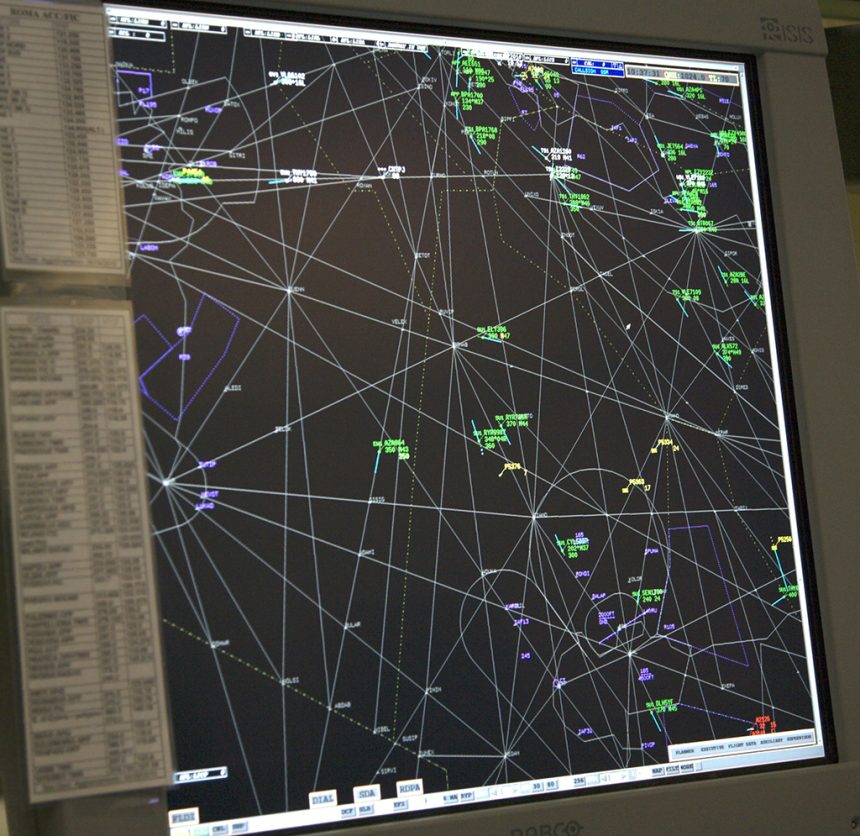In year 2000 I interviewed two controllers working at the Rome Military ATCC during Operation Allied Force. I was interested to give readers an idea about controlling the airspaces during the Balkans war. Here’s the report I wrote after talking with them.
Gen. (aux) Battifoglia is no longer the CinC of the Rome SCCAM (Servizio Coordinamento e Controllo Aeronautica Militare, Military ATCC), but on Mar. 24, 1999, when the first NATO bombs hit Serbia as part of Operation Allied Force, he was wearing his earphones listening and watching the aircraft heading to the Balkans that were filling of tracks and transponder codes his radar screen. Today he has left active duty and works as a high rank officer within the committee that is studying the causes of the famous Ustica crash. However he was glad to talk about his strong commitment in the Allied Force because “It was the most interesting and formative experience of a 40-year life spent within the Aeronautica Militare (ItAF)”.
On Day 1 of Operation Allied Force, Battifoglia was in his office at Ciampino Center with his Deputy Chief Lt Col Claudio Luccioli when they received a classified message stating that the attack was about to begin. “We were very interested to know in advance about the beginning of the strikes” Gen Battifoglia told me. “Our area of responsibility was the greatest among the Military Control Centers (located in Milan, Brindisi and Padova) as Rome FIR (Flight Information Region), that our radars continuously controlled, represents the 60% of the whole Italian airspace, spreading from Elba Island to the South of Sicily. We already had hundreds of aircraft hosted in the airbases we managed (Grosseto, Grazzanise, Pratica di Mare, Trapani, Cagliari-Elmas, Sigonella and Decimomannu) and we were aware that many Italian and foreign missions were shortly taking off from there. Our main concern was to help them accomplishing their tasks without overflying towns and to provide deconfliction with civilian and general air traffic”.
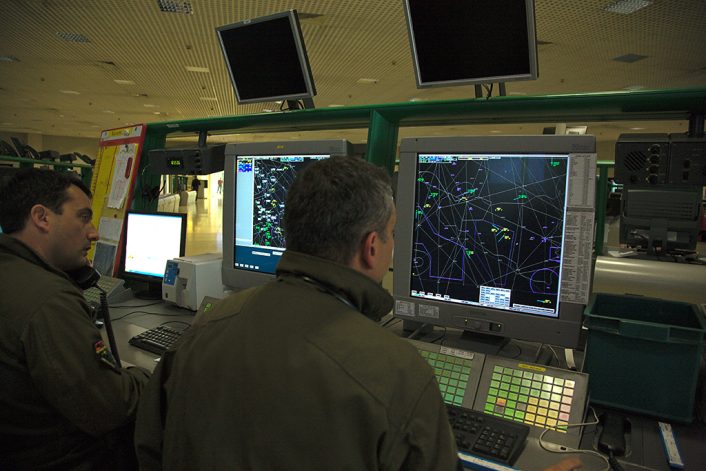
The GAT traffic was in fact a concern for the Italian controllers: the main airports on the Adriatic coast had been closed to commercial aircraft two hours before the “rock and roll” codeword (meaning “clear to fire”) was given to the pilots and use of all the eastern airways had been temporary denied to let operative flights flying with as less restrictions as possible.
“I spent some hours working at Brindisi Radar on the Southern Adriatic coast during the war: it was impossible to let civilian aircraft flying through that area as the radar screen was fully studded with tracks of allied aircraft”. That was a wise decision. However it meant that the obsolete airspace configuration needed a new design. “
“We were about to face big trouble as we did not have only the fighters based in our area but had also all civil traffic shifted from the Adriatic area on our side to keep Brindisi and Padova zones free. Incidentally, the war broke out while we were moving to the new operative building and this represented a further complication”. Airway scheme of the eastern flank was temporary suspended: B-23, G-23, W-95 and W-98 routes were abolished and flights to Africa and Middle East transiting the Italian airspace were only permitted to use A-14 and A-1, two parallel airways crossing Rome ATCC responsibility area from NW to SE with Fiumicino intercontinental hub lying in the middle. “We had to boost our capabilities to manage the mixed traffic and successfully achieve our mutated tasks:
1) to control flights (both operative and supporting ones) involved in Operation Allied Force;
2) to manage daily Italian Air Force training missions that were going ahead following the pre-planned schedule;
3) to provide permeability of the military areas to the largely increased civilian traffic trying to keep it smooth and fluent and avoiding delays
First of all, there was the need to increase the capacity of the Center without decreasing safety measures; the creation of new dedicated corridors was considered the most effective solution. “Lt Col Luccioli had already drawn a corridor for the Danish and Norwegian F-16s (based at Grazzanise since 1998), a special route that skirted Naples CTR and Rome-Fiumicino STAR (Standard Arrival Route) and led the fighters inside a Restricted Area from where they could head directly to the Adriatic without affecting civilian movements, so I immediately thought of a similar corridor for the Fairford based B-1Bs and B-52s that came fully loaded with bombs from North.
Initially the heavy bombers followed an 8-hour long route above Spain and central Med and entered the theater of operations circumnavigating Southern Italy but soon they began requesting a more straight ride to the target area to have aircraft available for another mission in a shorter time. We overcame the initial difficulties by clearing them above unpopulated regions inside military restricted areas and creating new reporting points (dubbed with funny names like “Backstreet”) and the Buffs and Bones crews began appreciating these big cuts. We reserved for them and for the AAR operations of the RAF Tornados cruising levels inside our upper airspace so that they could overfly military training areas usually engaged by the Italian F-104 Starfighters above the ceiling authorized to the training flights. Fortunately tankers and support assets used airways to reach the operative area as they transited to the refueling orbits as GAT traffic and we were able to put them in the right sequencing between civilian aircraft”.
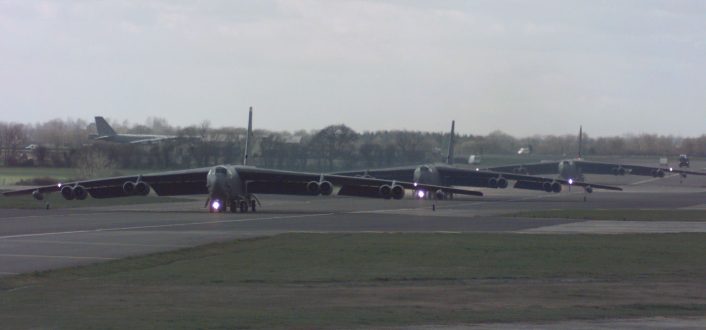
The war went into Phase III and many more allied aircraft were deployed to Italian airbases, especially those on the Western side of the peninsula that weren’t already overcrowded. This created new troubles: “After the first month of war the increase in raid pressure and more aircraft being based in our region almost led to the collapse of our or airspace, especially since we discovered that Milosevic could intercept our ATOs and FPLs (flight plans)” Battifoglia explained.
“There was a strong feeling among the NATO that the repetitive use of some routes and the exact knowledge of the TOTs (Time On Target) could have been the causes of the loss of the F-117 and the 31FW F-16. We were compelled to do something planners would never do: we put FPLs out of Operation Allied Force.
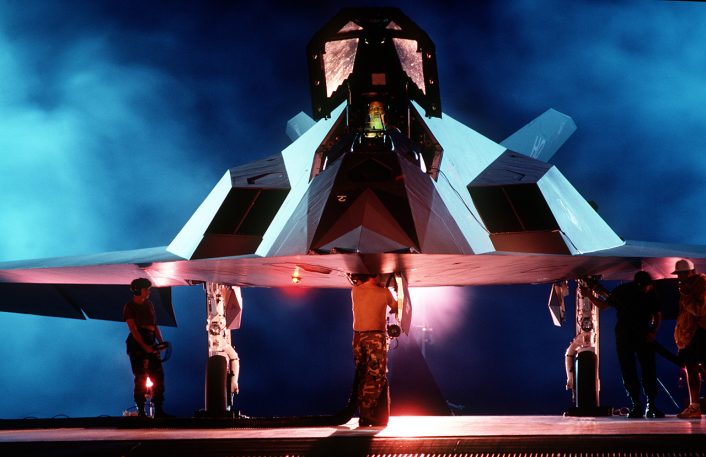
As a consequence, in the mid of the war we lost the capability of coordinating levels and routes and estimating times above navaids. We were unable to react strategically to the traffic requests anymore and to handle it in advance so we started to think in a more tactical way, that is to say we almost knew of a formation as soon as the leader called us on frequency for the initial contact or when the control tower at departure aerodrome called on the phone to tell us the aircraft had requested the start up clearance.”
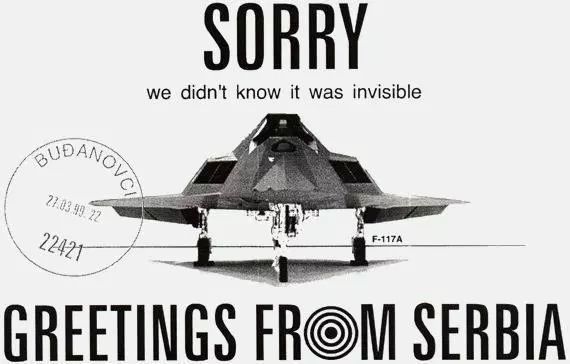
At that time French pilots were operating Mirages out of Solenzara in Corse, US “KC”s coming from both Moron, Istres, UK and Germany had increased their crossings throughout the Tyrrenian Sea, Mirage 2000s had been re-located from Istrana to Grosseto to make room for additional Mirage 2000N, NAS Sigonella already hosted the whole allied maritime patrol assets plus a U-2S detachment; 18x ANG and Reserve A-10s were based in Trapani while B-2s operated daily from Whiteman almost in complete radio silence…… The only positive aspect of the orbat (order of battle) distribution was that the RAF Tornados, being detached to Solenzara, didn’t need any air-to-air refueling above Central Italy before reaching the Adriatic and this kept some British tankers away of our zones”.
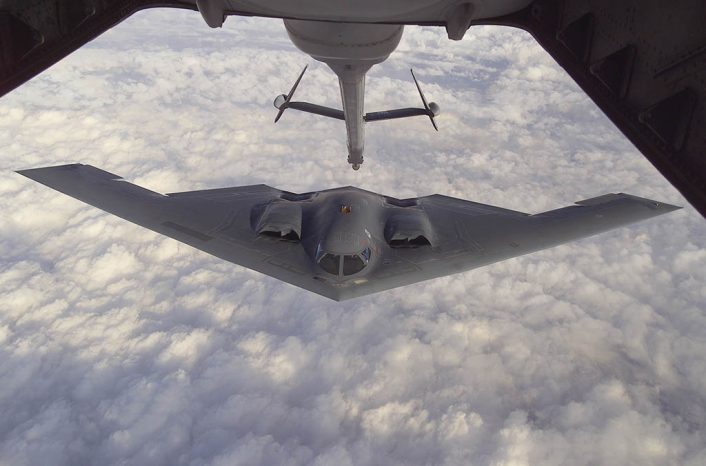
Prior management of the waves of missions was however just a dream: “We only received classified bulletins from the CAOC (Combined Air Operation Center, for the Americans “K-OK”) which we used to get a preview of the traffic we could expect” Luccioli told us, “we had to draw further corridors for the newcomers and foresaw wide altitude reserve windows for the flights: for example the Warthogs were a problem for us as their performance were not comparable to those of the fast F-16s that were quite quite easy to manage. The A-10s were very slow with poor climb speed especially when loaded with tons of bombs or Mavericks, when they departed from Trapani, take off and landings at the nearby Palermo Punta Raisi airport were subject to delay”. A special corridor to let them going direct to Brindisi immediately after take off was soon created and kept free 24 hours a day at certain levels.
Something similar was done for the Italian B-707: two kind of route were created, dubbed “North” and “South” according to the direction the tanker assumed after the take-off. When the tower told the ATCC that a tanker was about to depart following North or South route the military controllers already knew its reporting points and were able to calculate estimates that were provided to the civilian ATC. Coordination with civilian controllers was paramount in that period to reduce the risk of collisions. “Our motto was –try to positively comply with pilots’ request otherwise they probably will do it the same” Lt Col Luccioli explains.
During “Live ops”, relationship with the pilots was sometimes difficult as controllers always needed to know as much information about the flight as possible while pilots tried to hide most of the flight details, especially since the stealth downing and the overall war lessons learned until then, had stressed the importance of COMSEC (Communication Security) matters. “Pilots were aware that someone could hear them on UHF frequencies” Battifoglia explained “and we didn’t operate secured radios: this could be hazardous for their safety but on the other side we had the strong need to have maximum knowledge about their planning in order to deconflict all of our traffic”. Since all missions started to use randomly assigned callsigns, often changing them twice during the same flight, controllers experienced more troubles to positively identify one flight rather than another one during the RTB (Return To Base) phase.
“We needed to know the type of aircraft because this detail permitted us to know if the flight could go faster or climb higher (B-52 differs a lot from the B-1 from the controller’s perspective) and it could have been very useful especially if the missions were approaching the borders with the French airspace. However, pilots were unwilling to answer our questions; they often didn’t reply at all. On one day two A-10s just taken off told us they wanted to make a 180 turn and land asap. I cleared them to do so and to proceed direct to the field but as I asked them –Sir, have you got trouble, why are you aborting this flight? (just to know if they needed special assistance on the ground) – they simply ignored my query” Luccioli remembered.

Fortunately the war ended without near-misses or major emergencies although some shivers went down the back of Rome Military personnel. “It happened mostly towards the end of Operation Allied Force” Lt Col Luccioli recalled “when pilots were probably more tired. We experienced a few cases when pilots didn’t comply with our instructions, almost always when the mission was RTB (Returning to Base) and pilot concentration had decreased. Fortunately we had become able to understand from the crew’s voice if they were tired or not and, especially if they were coming back on the morning after CAPping 6 hours above the Balkans, we tried to give them as clear instructions as possible and to use standard phraseology in a perfect English. The “controller’s judgement” was our solution to this kind of problems as we understood that pilots involved in the Allied Force had to be helped as they were subject to great tensions and stress as we were”.
When the war ended Italian controllers were happy to guide all pilots flying at that time back to their homebases with all their bombs unreleased. “We were proud to have successfully accomplished our task in such an effective and reliable way. Neither midairs nor near-misses occurred and we were ready to manage the additional aircraft that would have been based to Decimomannu should the war had continued”.
After such an experience Gen Battifoglia left active duty while Lt Col Luccioli left the Rome Military ATCC for new assignment within the Brigata Spazio Aereo (Airspace Brigate). They have already reached the apex of their career “in front of the screen”.

